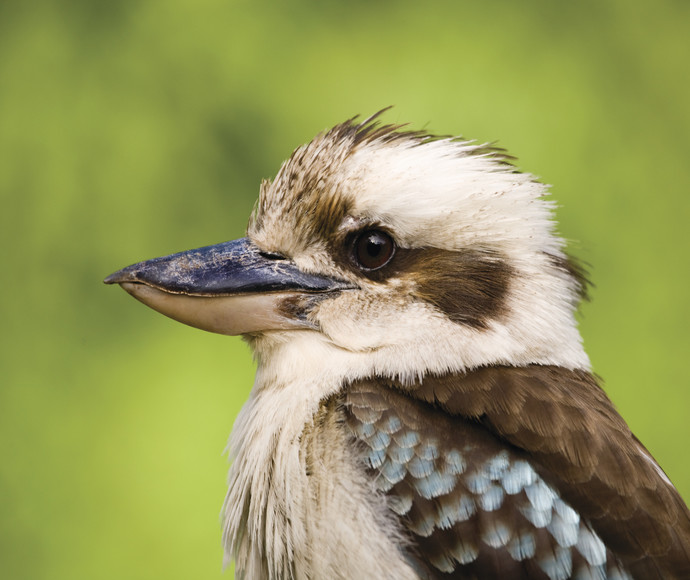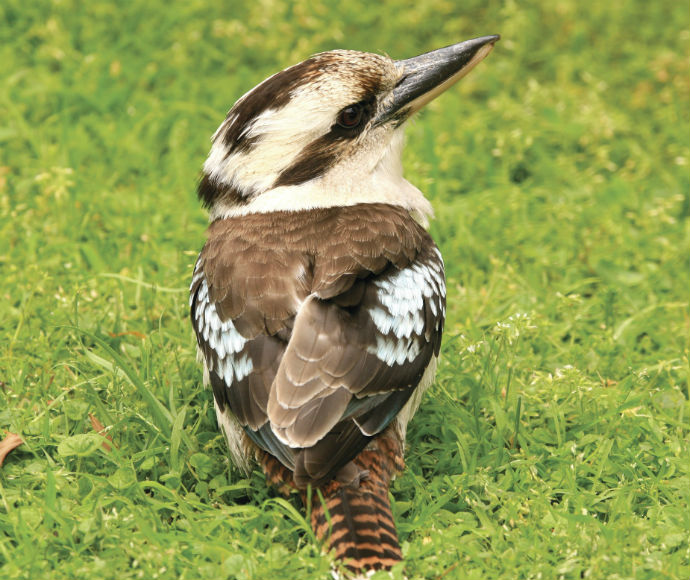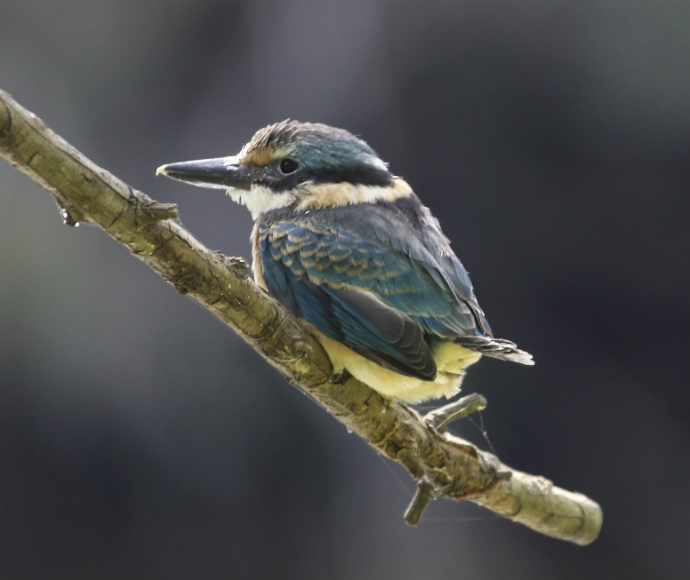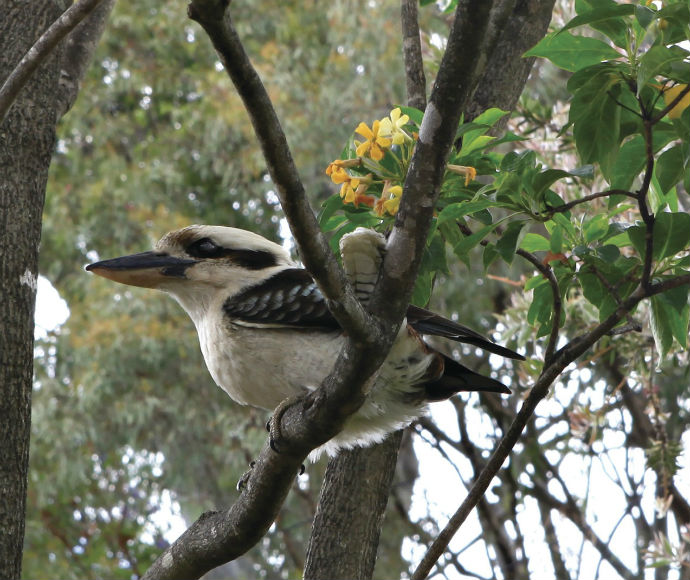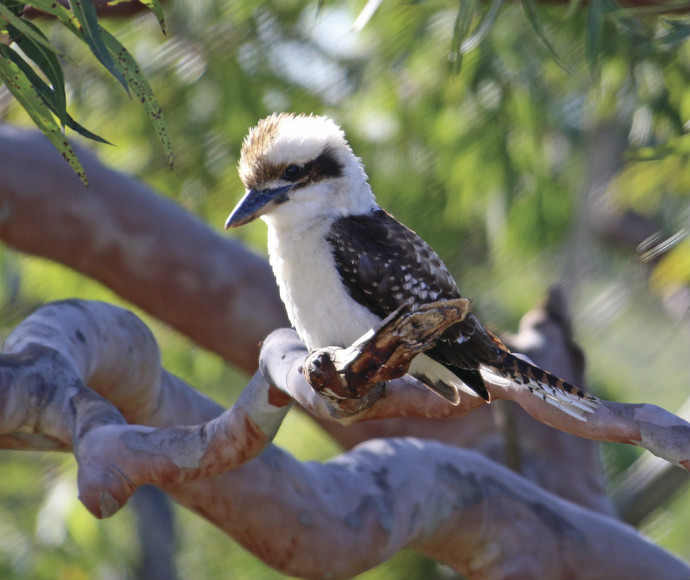When compared to the little kingfisher, which is only 12 centimetres long, the laughing kookaburra is truly a giant. Its plumage is shades of whites and browns, which help it to blend easily into its environment. This makes it more difficult for prey or predators to see the bird.
There are 10 kingfisher species in Australia, 6 of which can be found in New South Wales:
- azure kingfisher (NSW)
- blue-winged kingfisher
- buff-breasted paradise kingfisher
- collared kingfisher (NSW)
- forest kingfisher (NSW)
- laughing kookaburra (NSW)
- little kingfisher
- red-backed kingfisher (NSW)
- sacred kingfisher (NSW)
- yellow-billed kingfisher.
Although their size differs, all kingfishers look similar. They have stout, squat bodies with large heads and long beaks.
What do they sound like?
The laughing kookaburra is not really laughing when it makes its familiar call. The cackle it makes is actually a territorial call to warn other birds to stay away.
The chuckling voice that gives this species its name is a common and familiar sound throughout the bird's range. The loud 'koo-koo-koo-koo-koo-kaa-kaa-kaa' is often sung in a chorus with other individuals. The laughing kookaburra also makes a shorter 'koooa' sound at times.
Where do they live?
The laughing kookaburra lives in forests, open woodlands, or on the edges of plains. It requires a large variety of food all year round, and a suitable nesting site.
What do they eat?
Kookaburras use their strong beaks to catch a wide variety of prey, including fish, small snakes, lizards, rodents, worms, beetles and other insects. In times of grasshopper or mouse plagues, their diet will consist almost entirely of these animals.
To catch its food, the kookaburra uses a wait-and-pounce technique, taking up a post with a good view. When prey appears, the kookaburra drops straight down from its perch, its wings back, with beak ready to grab its dinner. Large prey items like lizards and snakes are bashed against a tree or a rock, to kill them and soften them up before they are eaten.
Breeding
A kookaburra lives in the one place for most of its life. It also mates for life.
Laughing kookaburras establish a social system in which only the dominant male and female in a family group will breed, usually between spring and mid-summer. Nests are made in tree hollows or termite mounds in trees or on the ground, where the female will lay up to 3 eggs. It takes between 24 and 29 days for the eggs to hatch. During this time, the rest of the family helps out with the incubation, feeding, and protection of the young.
Threats
There are 2 ways in which humans can have an adverse effect on kookaburras:
- Kookaburras need trees for nesting, roosting and perching on while waiting for prey. Removing trees means that there are fewer breeding and feeding sites available for kookaburras, and this can lead to a decline in numbers.
- When humans use pesticides to kill insects, they end up poisoning the animals which usually feed on those pests.
When kookaburras eat contaminated insects, they absorb the pesticide chemicals and store them in their fat.
When food is in short supply and the kookaburras use some of their fat store, high concentrations of chemicals may flow into the blood.
The result can be reproductive losses or even death.
If you must use pesticides, choose the least toxic ones – and take special care to avoid those which build up residues in the bodies of animals which prey on insects.
Protection of native animals
All native birds, reptiles, amphibians and mammals, but not including dingoes, are protected in New South Wales by the Biodiversity Conservation Act 2016.
